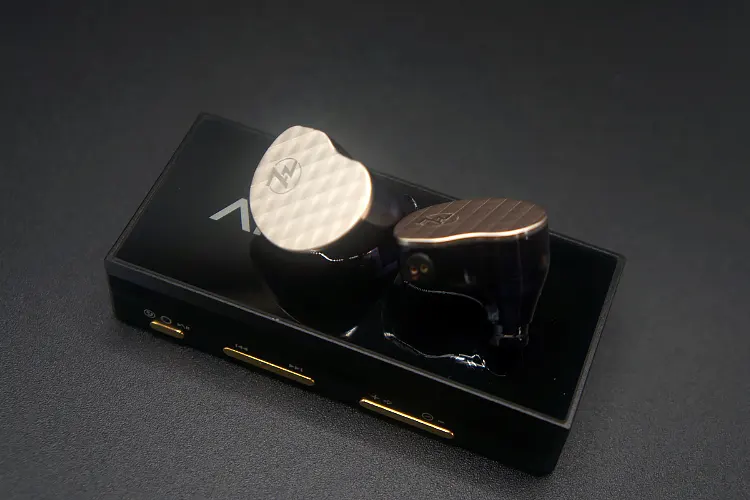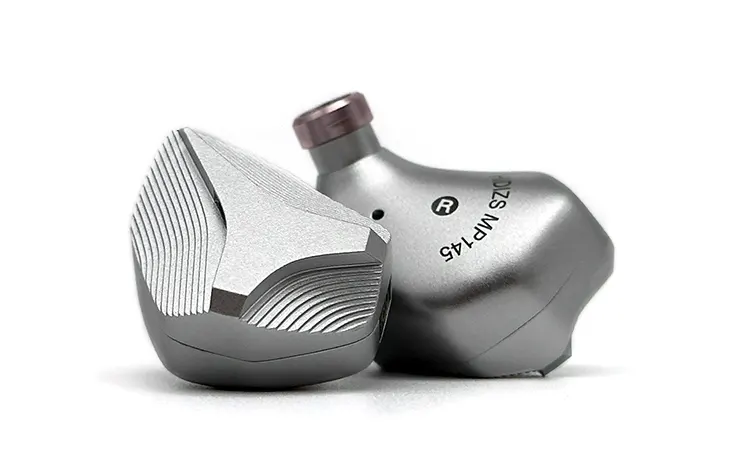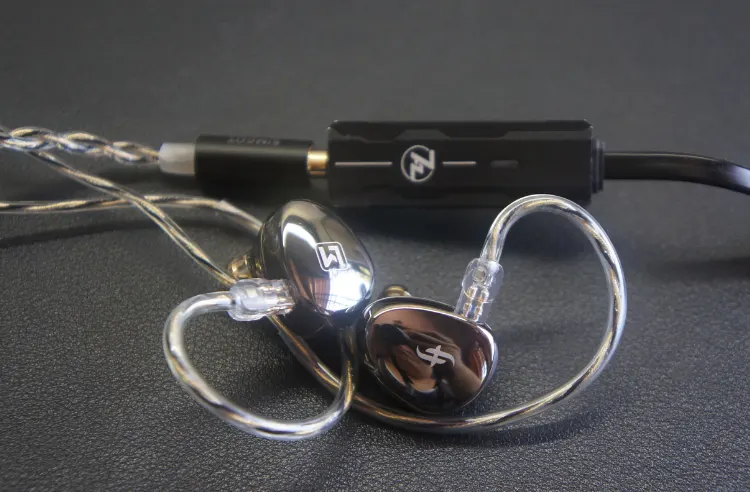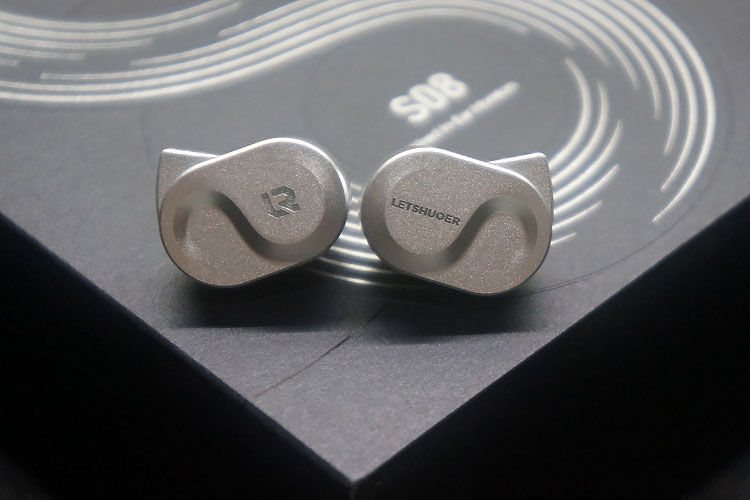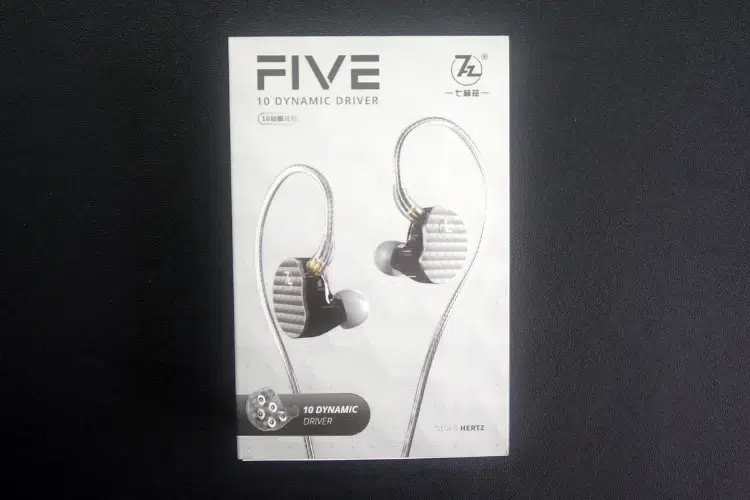Synergy
Efficiency
The Five has an impedance of 12 ohms and a sensitivity of 105 dB/mW, making it compatible with laptops, DAPs, and dongle DACs, however, I found that it did exhibit better bass tactility and slightly better instrument separation when powered through a dongle or desktop class DAC/AMP.
During my portable testing with the Five, I paired it with 7Hz’s Artemis39 DAC/AMP and the ddHiFi TC35Pro E2. For desktop use, I connected the Five to the FiiO K11 DAC/AMP via its SE output.
While I achieved acceptable performance through the TC35, I observed improved bass texture when I paired it with the K11 and 7Hz Artemis39.
Pairings
The 7Hz Five pairs well with decently powerful sources with a neutral presentation to prevent adding any further emphasis on the bass or treble region. Throughout my testing, I preferred pairing the Five with the FiiO K11 and the 7Hz Artemis39
I first tried the Five with the ddHiFi TC35Pro E2. It was able to sufficiently drive the Five to a listenable volume while maintaining good fidelity, however I found that its bass exhibited more depth when paired with a more powerful source.
Pairing the Five with the more powerful Artemis39 yielded better results. Alongside improved texture and imaging, I appreciated the improved ease of use brought by its Bluetooth connectivity.
Select Comparisons
Hidizs MP145
Technical
The Hidizs MP145 uses a single 14.55mm planar magnetic driver with an impedance and sensitivity of 30Ω and 104 dB/mW respectively.
The Five and its combination of 5 different 6mm dynamic drivers has an impedance and sensitivity of 12Ω and 105 dB. In practice, I found that the MP145 was harder to drive.
Design
The MP145 makes use of a CNC-machined aluminum shell with a faceplate cut by 3 strong edges, forming a fin towards the center of the shell.
Both the face plate and the body of the MP145 is constructed out of aluminum, whereas the Five’s resin shell is paired with a metal faceplate.
The Five’s faceplate has a unique faceted pattern up front, paired with a reflective de-saturated gold finish, giving it the perfect balance of subtlety and visual flair.
In day-to-day usage, I found the Five’s lighter shell to be more comfortable, with the isolation performance being similar between both IEMs.
Performance
The 7Hz Five and the Hidizs MP145 both have V-shaped sound signatures. However, the Five places more emphasis on the bass region while the MP145 has a stronger treble emphasis.
The MP145 has a sharper, more emphasized treble that adds energy to its overall tuning but can veer into sibilance, unlike the smoother and darker treble of the Five.
Instrument separation is noticeably better on the MP145, which, combined with its wider soundstage, offers a more spacious and precise listening experience. The midrange on the MP145 is also more present and balanced, providing clearer and more natural vocal reproduction.
In contrast, the Five’s mids feel recessed and thin, with vocals appearing more emphasized due to the lack of midrange instrument presence but sounding less clear than on the MP145.
On the low end, the Five delivers a stronger and more impactful sub-bass, creating a darker sound signature, while the MP145 maintains a V-shaped signature with less depth in the sub-bass but a more aggressive and energetic overall tonality.
SIMGOT EA500LM
Technical
Inside the SIMGOT EA500LM is a single Lithium Magnesium dynamic driver, while the Five houses 5 different 6mm dynamic drivers meshed together with an electronic crossover.
The EA500LM has an impedance and sensitivity of 16Ω and a sensitivity of 106 dB/mW, whereas the Five has an impedance and sensitivity of 12Ω and 105 dB. In practice, I found that the Five was easier to drive.
Design
The EA500LM has a smaller yet denser full metal shell when compared to the resin and metal shell of the Five.
The EA500LM has a polished mirror-like finish that can be prone to fingerprints and micro scratches, whereas the Five has a more durable metal faceplate with a reflective faceted pattern up front.
Despite it being larger, I found that the Five was more comfortable to wear for prolonged usage, while the EA500LM had an advantage when it came to isolation performance.
Performance
The SIMGOT EA500LM and the 7Hz Five both feature V-shaped tunings but diverge in their execution and overall tonal balance.
The EA500LM presents a more balanced sound signature, with dynamic mids and significantly better imaging performance, despite a similar soundstage width to the Five.
Vocals on the EA500LM are cleaner and more resolving, though they lack the weight and authority the Five provides, particularly for male vocals.
In the lower midrange, the EA500LM excels with clearer, more precisely placed instruments compared to the Five, whose mids often sound compressed and lack separation.
However, the EA500LM’s treble is more pronounced, bordering on sibilance and occasionally sounding metallic, while the Five’s smoother treble avoids harshness.
The Five leans into a sharper V-shaped tuning with a more dominant sub-bass, offering superior dynamics and harmonics for bass and percussive instruments.
Overall, while the EA500LM achieves better tonal balance and midrange clarity, the Five delivers a darker, bass-heavy sound that sacrifices balance for impact.
LETSHUOER S08
Technical
The LETSHUOER S08 uses a single 13mm planar driver with an impedance and sensitivity of 26Ω and 105 dB/mW, whereas the Five and its 5 different 6mm dynamic drivers have an impedance and sensitivity of 12Ω and 105 dB. In practice, I found the Five easier to drive the S08.
Design
While both IEMs have a subtle yet appealing visual design, they execute it in different ways. The LETSHUOER S08’s CNC-machined anodized shell has a striking face plate with “S” and “8” shapes engraved onto it, whereas the Five has a less utilitarian and reflective pattern up front, reminiscent of a starry sky.
Aesthetics are quite subjective, but I find that the S08 suits my taste with the subdued visuals more suited as an everyday carry.
In practice, both IEM shells are quite durable for daily wear and tear, but I found the Five to be lighter and more comfortable, whereas the S08 had better isolation performance.
Performance
The LETSHUOER S08 and the 7Hz Five share similarities with their V- or U-shaped tunings, but they cater to slightly different listening preferences.
Among the IEMs compared to the Five, the S08 is the closest in overall tonality, leaning towards a warm sound signature.
The key difference lies in the midrange presentation, where the S08 places far greater emphasis, offering lush lower mids with better note weight and natural-sounding vocals.
String instruments, in particular, benefit from superior fidelity and resolution on the S08 compared to the more recessed and thinner midrange of the Five.
In contrast, the Five delivers significantly stronger sub-bass impact, adding a sense of excitement and energy, though the S08’s sub-bass still hits deep with a balanced presence. Treble energy is comparable between the two, but the Five edges ahead in terms of resolution.
Overall, while the Five excels in delivering a thrilling and dynamic presentation, the S08 offers a more relaxing and cohesive sound signature.
My Verdict
7Hz’s release of the first 5 dynamic driver IEM has some novel characteristics that are worth a listen. It has a deep and tactile sub-bass response that is unlike any other IEM I’ve tried, and its treble performance is decently resolving as well.
However, the Five tends to scoop out the mid-range, often making tracks sound like they’re composed of just drums, vocals, and cymbals.
At $149, the 7Hz Five presents a unique sound signature that could be suited for bass heads and hip-hop enthusiasts, but it doesn’t have the tonal balance to match the genre-flexibility of its competitors at this price range.
7Hz Five Technical Specifications
- Driver configuration: 5 6mm Dynamic Drivers
- Frequency response: 5 Hz – 40 kHz
- Impedance: 12 Ω
- Sensitivity: 105 dB
- Connector: 0.78mm 2-pin
- Plug: 3.5mm


